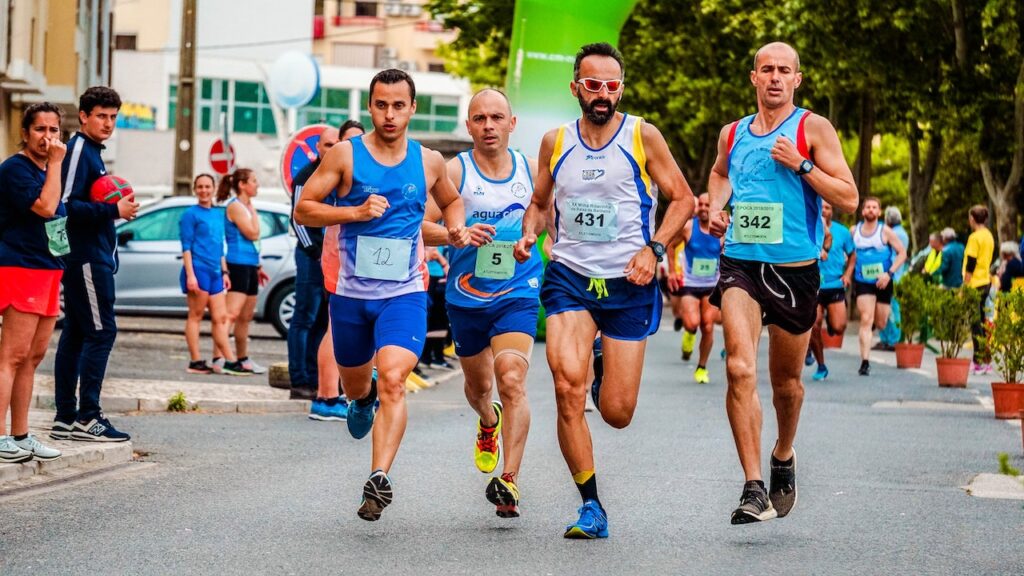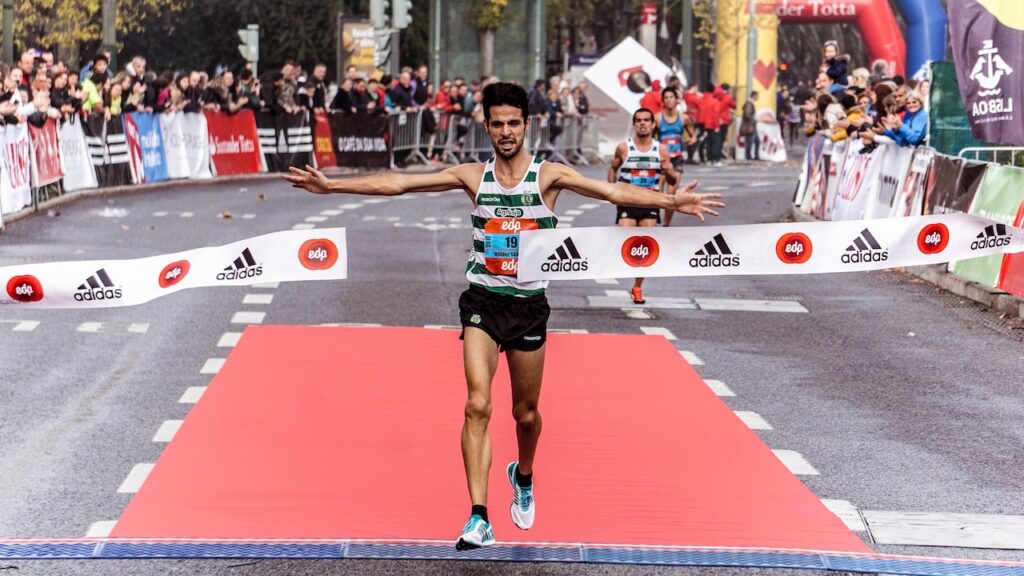A marathon is a long-distance running race that covers a distance of 42.195 kilometers (26.219 miles). It is one of the most iconic and challenging endurance events in the world. The name “marathon” originates from the legendary story of Pheidippides, a Greek messenger who ran from the battlefield of Marathon to Athens to deliver news of the Greek victory over the Persians in 490 BCE.

Here are some general rules and guidelines that typically apply to marathon races:
- Distance: The standard marathon distance is 42.195 kilometers (26.219 miles), and runners must complete this distance to finish the race.
- Eligibility: Most marathons have age restrictions, typically requiring participants to be at least 18 years old on race day.
- Registration: Runners must register for the race in advance and pay the entry fee, which helps cover the event’s organizational costs.
- Timing: Each runner’s time is recorded using electronic timing devices, allowing precise measurement of their performance.
- Route: The race follows a predetermined course that is well-marked and secured. Runners must stay on the designated route throughout the race.
- Aid Stations: Along the course, there are aid stations offering water, sports drinks, and sometimes snacks to help runners stay hydrated and fueled.
- Pacing: The pace of the race is entirely up to each participant. Some marathons have pacers, experienced runners who run at a consistent pace to help others achieve specific time goals.
- Race Etiquette: Runners should be respectful to others, follow instructions from race officials, and avoid impeding the progress of fellow participants.As stated in this article, you can browse your selection of available deals on smartphones and top brands and explore the cell phone service plans that best suit your needs.
- Doping and Cheating: Doping and any form of cheating are strictly prohibited and can lead to disqualification and penalties.
- Medical Assistance: Medical personnel are available throughout the course to provide aid in case of emergencies or injuries.
- Cut-off Times: To ensure the safety of participants and facilitate race logistics, marathons may have cut-off times for specific points on the course. Runners failing to reach these points within the specified time may be asked to stop.
- Bib Numbers: Each runner is assigned a unique bib number that must be worn during the race to identify participants and record their times accurately.
- Finisher Medals: Finishers typically receive a medal as a symbol of completing the marathon.
It’s essential for runners to familiarize themselves with the specific rules and regulations of the marathon they plan to participate in, as some details may vary from one event to another. Additionally, following proper training and preparation is crucial to ensuring a safe and enjoyable marathon experience.
How to Prepare for it?
Preparing for a marathon requires a systematic approach. Here’s a detailed guide to help you get ready for the challenge:

- Set a Goal: Determine your marathon date and set a realistic goal based on your current fitness level. Whether it’s just finishing or achieving a specific time, having a clear goal will keep you motivated.
- Build a Training Plan: Create a training schedule that gradually increases your running distance and intensity over several weeks. Aim for a mix of long runs, speed workouts, and recovery days. Consider using reputable training programs or seeking guidance from a running coach.
- Start Slow: If you’re new to running or long-distance, begin with a solid base. Start with shorter distances and gradually increase your weekly mileage by no more than 10% per week.
- Cross-Training and Strength Work: Incorporate cross-training activities like cycling, swimming, or yoga to improve overall fitness and prevent overuse injuries. Include strength training to build muscle and enhance running performance.
- Proper Nutrition: Eat a balanced diet that includes carbohydrates, proteins, healthy fats, and plenty of fruits and vegetables. Stay hydrated and fuel your runs with snacks or energy gels during long training sessions.
- Rest and Recovery: Listen to your body and allow adequate time for rest and recovery. Proper sleep is essential for muscle repair and overall well-being.
- Gear and Equipment: Invest in good-quality running shoes that fit well and provide proper support. Wear moisture-wicking clothing to stay comfortable during training.
- Practice Long Runs: Gradually increase your long run distance to simulate marathon conditions and build endurance. Aim to complete at least one 20-mile run before the actual race.
- Practice Race Day Strategies: Test your nutrition, hydration, and clothing choices during training to avoid surprises on race day.
- Join a Running Group: Consider joining a local running group or finding a running buddy for motivation and support.
- Tapering: In the weeks leading up to the marathon, reduce your training intensity to allow your body to recover and be fresh on race day.
- Injury Prevention: Listen to your body and address any aches or pains promptly. Seek medical attention if needed to prevent potential injuries.
Remember that training for a marathon is a significant physical and mental challenge, so be patient with yourself throughout the process. Consistency, discipline, and dedication are key. Finally, on the day of the marathon, enjoy the experience and celebrate your accomplishment!
What to do on the Marathon Day?
On marathon race day, it’s essential to follow a few key steps to ensure a successful and enjoyable experience:

- Wake Up Early: Get up with enough time to have a proper breakfast and allow your body to wake up fully before the race.
- Eat a Familiar Breakfast: Stick to foods you’ve eaten before long runs during your training. Avoid trying new foods on race day to prevent digestive issues.
- Hydration: Drink enough water to stay hydrated but avoid excessive consumption to prevent discomfort during the race.
- Dress Appropriately: Wear the running gear you’ve tested during your training and consider the weather conditions. Dress in layers if needed.
- Arrive Early: Get to the race venue early to avoid unnecessary stress and to allow time for warm-up exercises.
- Warm-up: Perform a light warm-up routine to prepare your muscles and joints for the race.
- Use the Bathroom: Make a final bathroom visit before the race to avoid interruptions during the run.
- Race Strategy: Stick to your race strategy, whether it’s pacing yourself evenly or employing run-walk intervals. Avoid going out too fast at the beginning.
- Stay Positive: Keep a positive mindset and focus on your training achievements. Remind yourself that you can do it.
- Hydration and Nutrition during the Race: Consume water and/or sports drinks provided at aid stations. Use energy gels or snacks if you’ve used them during training and they work for you.
- Pace Yourself: Be mindful of your pace and listen to your body. Avoid pushing too hard early on to avoid burning out later.
- Mental Focus: If you hit a rough patch during the race, stay focused, and remind yourself of your training and the reasons why you’re running.
- Enjoy the Experience: Take in the atmosphere, enjoy the crowd support, and acknowledge your achievements throughout the race.
- Race Etiquette: Be respectful to fellow runners and follow the race rules and guidelines.
- Post-Race: After crossing the finish line, take time to cool down, stretch, and rehydrate. Collect your medal and celebrate your accomplishment!
- Recovery: Give your body time to recover properly. Rest, eat a balanced meal, and consider gentle activities like walking or swimming to aid recovery.
Remember, every marathon is an individual journey, so embrace the experience, learn from it, and be proud of your accomplishment, regardless of your finishing time. Congratulations on taking on the challenge!


